Understanding Japanese Cuisine Reveals More About Japan
〜 Savoring Japanese Flavors with History and Culture 〜

First Steps to Understanding Japanese Flavors
When visiting Japan, you'll want to try "Japanese cuisine" at least once. There are many dishes like sushi, tempura, and sukiyaki that are both beautiful to look at and deeply flavorful.
In this guide, we introduce representative Japanese dishes along with their historical background and food culture. We also explain recommended ways to eat them so that even first-timers can enjoy them with confidence. Please savor authentic Japanese cuisine as a memorable part of your trip.
Sushi
A dish of fresh seafood placed on vinegared rice. With varieties like nigiri sushi, maki sushi, and chirashi sushi, it's a representative Japanese dish that can be enjoyed anywhere in the country.
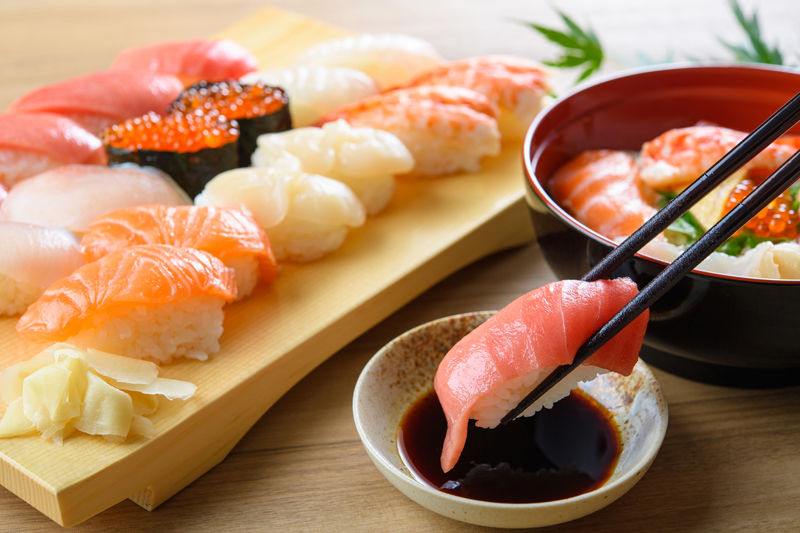
History and Origins
The origin of sushi dates back to "narezushi," a fish fermentation preservation technique from Southeast Asia.
In Japan, "narezushi" has been eaten since the Nara period, and "hayazushi" (using vinegared rice without fermentation) appeared during the Edo period.
Then in the early 19th century, "nigiri sushi" was born in Edo's streets along with the yatai (food stall) culture, becoming popular as a fast food for common people.
Today, it's widely available from high-end restaurants to conveyor belt sushi, and is enjoyed worldwide.
Recommended Ways to Eat
- It's OK to eat nigiri sushi with your hands (formally called hand-eating).
- Lightly dip only the neta (fish part) in soy sauce (dipping the rice too much will make it fall apart).
- If you don't like wasabi, you can ask for "sabi-nuki" (without wasabi).
- Gari (pickled ginger) is for palate cleansing between different types of neta.
Ramen
A popular noodle dish combining wheat noodles and soup. Flavors vary by region including soy sauce, miso, tonkotsu, and salt, with many "local ramen" varieties existing.
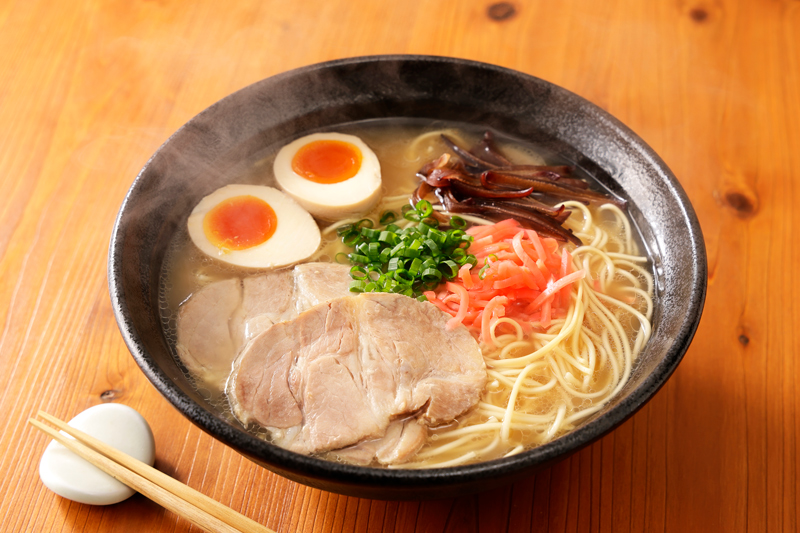
History and Origins
Ramen has its roots in "Chinese soba" that came from China. It began being served in Yokohama's Chinatown during the Meiji period.
From Taisho to Showa periods, Japanese-style soups and noodles were developed, and after the war, yatai ramen became established as a taste for common people.
Eventually, "local ramen" like Sapporo's miso ramen and Hakata's tonkotsu ramen were born nationwide, and now it's one of the national dishes.
Recommended Ways to Eat
- It's OK to slurp noodles with sound. This enhances the aroma and texture.
- It's recommended to take a sip of soup first, then proceed to noodles and toppings.
- To enjoy flavor variations, try adding table condiments (garlic, vinegar, chili oil) little by little.
Bento
A portable Japanese-style meal with rice and side dishes packed in one container. There are various styles like ekiben (station bento), convenience store bento, and homemade bento.
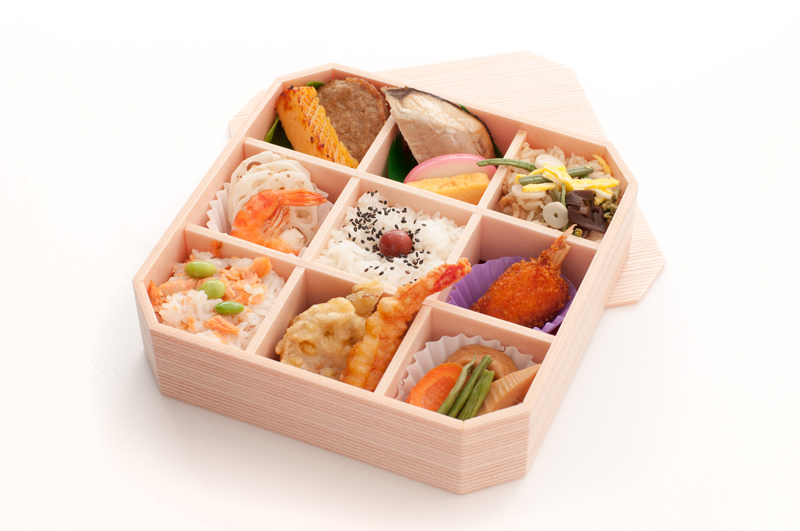
History and Origins
The origin of bento lies in "hoshii" (dried rice) from the Kamakura period.
During the Sengoku period, it was used as portable food, and during the Edo period, "recreational bento" became popular for outings and theater visits.
After the Meiji period, ekiben culture became established, and "station bento" using local ingredients and specialties became part of tourism.
Today, there are diverse styles like convenience store bento, airport bento, and department store basement bento.
Recommended Ways to Eat
- For bento that should be heated, ask convenience store staff to heat it in the microwave.
- Ekiben is typically enjoyed on Shinkansen or limited express trains. Dispose of garbage in the train's garbage bin.
- If there's no place to eat, look for public dining spaces (like park benches).
Sukiyaki / Shabu-shabu
Representative Japanese meat dishes where thinly sliced beef is cooked in a pot. Sweet and savory sukiyaki and light shabu-shabu are both interactive dining styles.
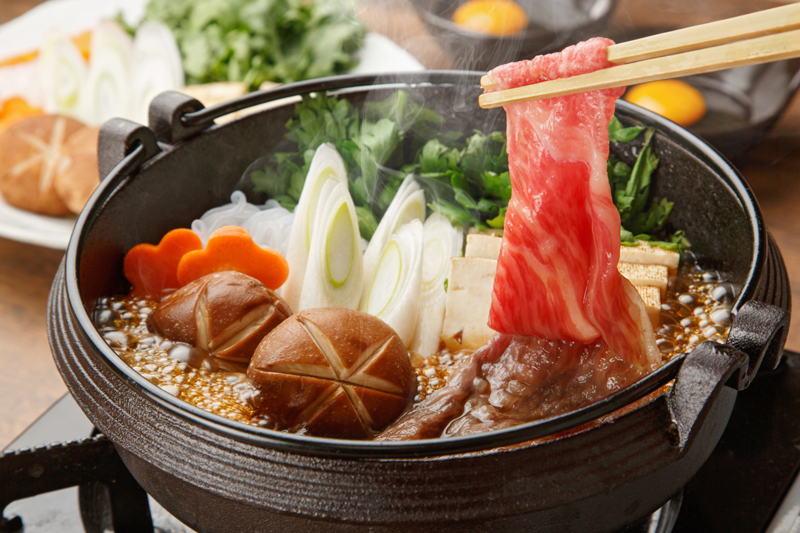
History and Origins
Sukiyaki spread during the Meiji period when beef culture was legalized.
It permeated among common people as the "taste of civilization and enlightenment," and after the war became a staple of home cooking.
Meanwhile, shabu-shabu was devised at a restaurant in Osaka in the 1950s and gradually spread nationwide.
Both are types of hot pot dishes, but differ greatly in seasoning and eating methods.
Recommended Ways to Eat
- Sukiyaki is traditionally eaten by cooking beef in sweet and savory warishita sauce and dipping in raw egg. It's OK without egg if you don't like it.
- For shabu-shabu, dip meat in hot water for a few seconds and eat with ponzu or sesame sauce. The key is not to overcook it.
- Ingredients (vegetables, tofu) become more delicious when cooked after the meat has released its broth.
Tempura
A dish where seafood and vegetables are wrapped in batter and fried. It's an elegant dish with a crispy texture, enjoyed with dashi-based tentsuyu sauce.
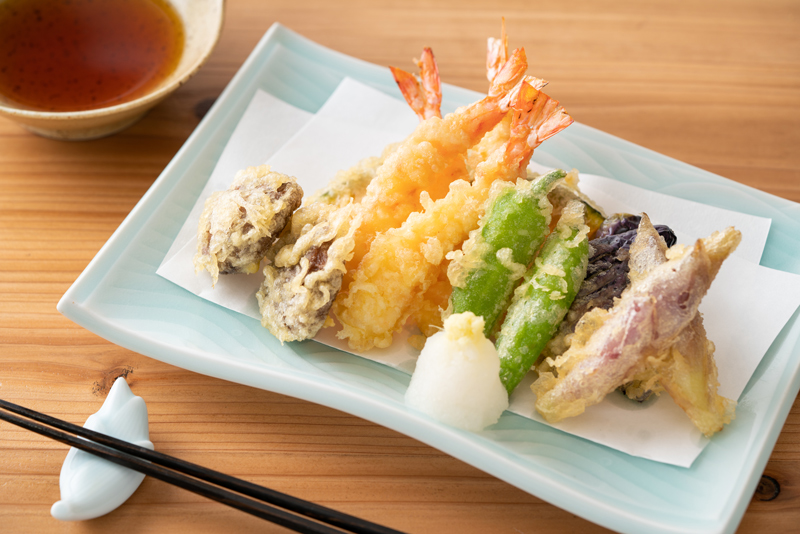
History and Origins
Tempura is said to originate from frying culture brought by Portuguese people in the 16th century, with one theory that "temporas" (fasting period) is the etymology.
During the Edo period, it developed as yatai cuisine, and the style of skewering fresh seafood and vegetables for frying became popular among common people.
After the Meiji period, it spread in various forms like teishoku, tendon, and high-end restaurant course meals, establishing itself as one of Japan's representative dishes.
Recommended Ways to Eat
- Add grated ginger or daikon to tentsuyu for a refreshing taste.
- Eating with salt to bring out the ingredient's flavor is also recommended.
- At tempura specialty restaurants that serve freshly fried items, they may serve one piece at a time.
Teishoku (Set Meal)
A balanced dining style providing rice, miso soup, main dish, side dishes, and pickles as a set. A reliable standard menu where you can enjoy home-style flavors even when dining out.
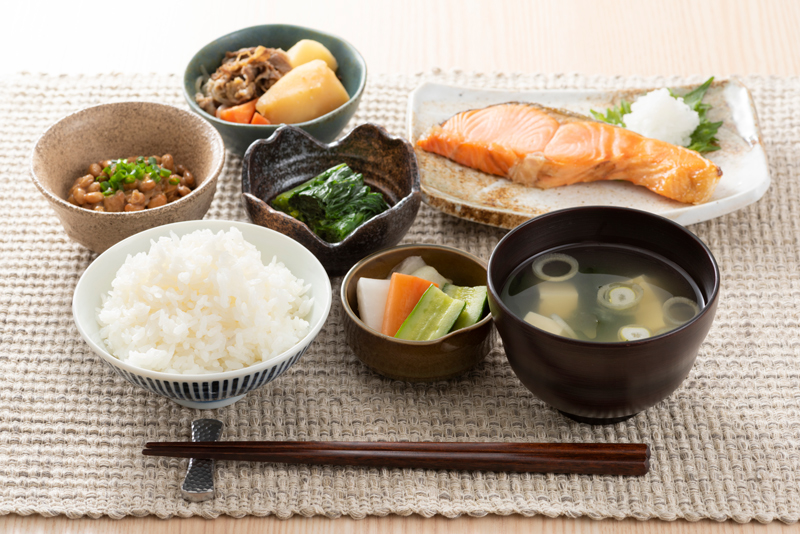
History and Origins
Teishoku derives from the "one soup, three dishes" balanced meal format.
It began being served in university and company cafeterias during the Meiji period, and after the war became popularized as "student teishoku" and "lunch sets."
With the development of the restaurant industry after the Showa period, it became established in local teishoku restaurants and family restaurants.
Modern teishoku has a basic composition of main dish, side dishes, rice, miso soup, and pickles.
Recommended Ways to Eat
- Eating progresses naturally: one bite of rice, one bite of main dish, while sipping miso soup.
- It's common to drink miso soup several times during the meal. You don't have to drink it only at the beginning or end.
- Pickles are good for palate cleansing after salty main dishes for good balance.
Tips for Enjoying Japanese Cuisine More
Summary: Enjoy Both Taste and Culture
Japanese cuisine is not just about "eating," but an experience deeply connected to history, climate, and culture.
Each dish contains wisdom and ingenuity cultivated over long history, seasonal ingredients that reflect the four seasons, regional characteristics, and consideration for those eating.
For example, beauty consciousness resides in how ingredients are cut and arranged, and seasonal feeling is reflected even in the choice of tableware. Also, exchanging words of gratitude like "itadakimasu" and "gochisousama" before and after meals is unique to Japanese culture.
While observing manners, please savor the taste, aroma, and color of ingredients, and even the stories behind them.
Surely, dining in Japan will become a special time that remains in your heart as a "highlight of your trip."
